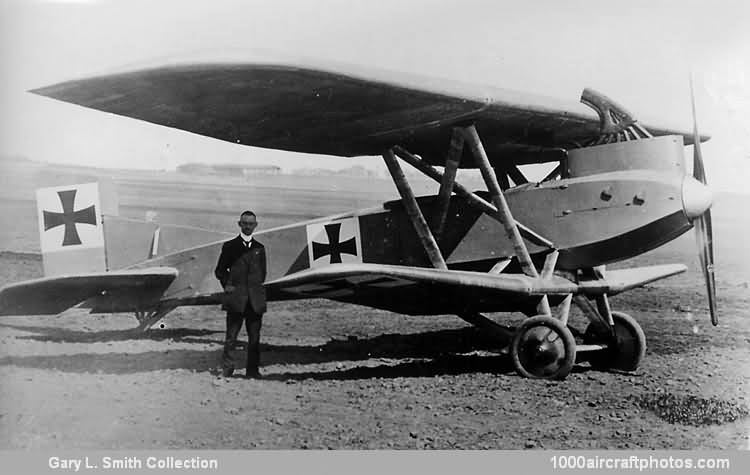05/31/2009. Remarks by Johan Visschedijk: "On November 18, 1916, Junkers received an order for three trial aircraft. Although two war years had passed, the Junkers works had not yet contributed a suitable aircraft. About this time the German army and navy demanded monthly (!) 1000 new aircraft (by January 1918 these demands were increased to a monthly 2000 aircraft).
The J 4 was desired as a low-flying armored anti-infantry aircraft, from which hand grenades and small handheld bombs would be thrown off over frontline positions and ditches, while the "bath tub" armoring protected engine and crew against the bullets from carbines and machine guns. The Junkers building method appeared also particularly suitable, as a complete metal airplane hardly or not at all could be set on fire by the opponents hand-arms.
Professor Junkers wanted to hold on to the all-metal monoplane concept, while the Idflieg categorically wanted a biplane. The monoplane was estimated at a take off weight of 3,968 to 4,409 lb (1,800 to 2,000 kg) and would need a large-span wing. Idflieg's argument the large-winged aircraft would not fit into the exsisting halls and tents in the field, covered-up the monoplane dislike by the Idflieg and most fliers.
So the sesquiplane J 4 was a compromise in being fitted with two wings and, to reduce weight, a fabric covered tail. The J 4 was the one and only diversion Junkers made from the all-metal monoplane concept. The first aircraft (pictured above) was flown from Döberitz by Arved von Schmidt on January 28, 1917, and in July the first production aircraft (with redesigned ailerons and rudder) was ready.
The type received the Idflieg designation J.I, indicating the first Junkers aircraft ordered by the German military, and should not to be confused with the first Junkers aircraft, the J 1.
The first aircraft were delivered to the German forces at Gent, Belgium. Initial power plant was the 200 hp Benz Bz IV, from 1918 a 260 hp Benz was fitted. At the end of the hostilities in November 1918, 189 aircraft had been delivered, another 38 already under construction were completed and delivered to the allied forces."
